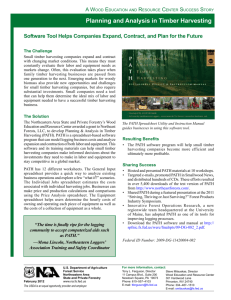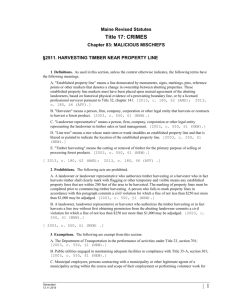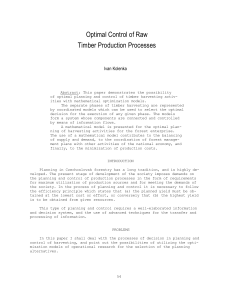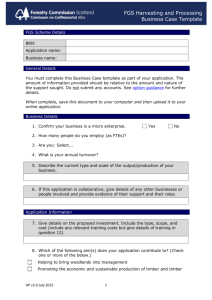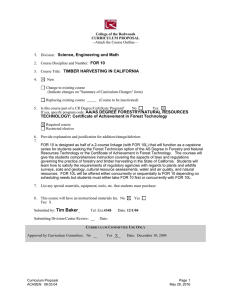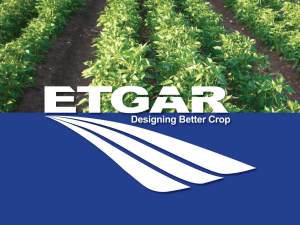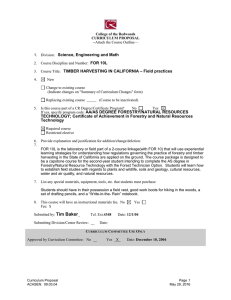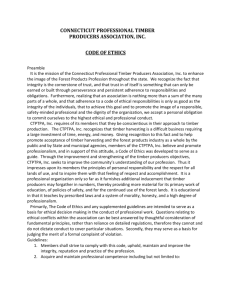NATRS 203
advertisement
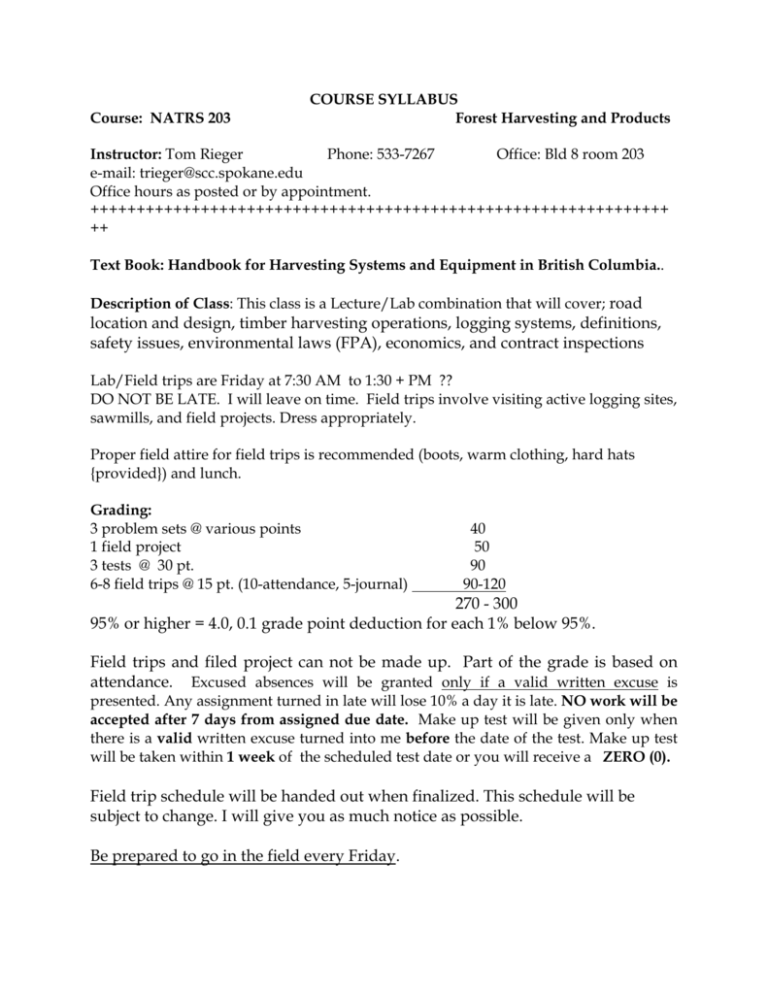
Course: NATRS 203
COURSE SYLLABUS
Forest Harvesting and Products
Instructor: Tom Rieger
Phone: 533-7267
Office: Bld 8 room 203
e-mail: trieger@scc.spokane.edu
Office hours as posted or by appointment.
+++++++++++++++++++++++++++++++++++++++++++++++++++++++++++++++
++
Text Book: Handbook for Harvesting Systems and Equipment in British Columbia..
Description of Class: This class is a Lecture/Lab combination that will cover; road
location and design, timber harvesting operations, logging systems, definitions,
safety issues, environmental laws (FPA), economics, and contract inspections
Lab/Field trips are Friday at 7:30 AM to 1:30 + PM ??
DO NOT BE LATE. I will leave on time. Field trips involve visiting active logging sites,
sawmills, and field projects. Dress appropriately.
Proper field attire for field trips is recommended (boots, warm clothing, hard hats
{provided}) and lunch.
Grading:
3 problem sets @ various points
1 field project
3 tests @ 30 pt.
6-8 field trips @ 15 pt. (10-attendance, 5-journal)
40
50
90
90-120
270 - 300
95% or higher = 4.0, 0.1 grade point deduction for each 1% below 95%.
Field trips and filed project can not be made up. Part of the grade is based on
attendance. Excused absences will be granted only if a valid written excuse is
presented. Any assignment turned in late will lose 10% a day it is late. NO work will be
accepted after 7 days from assigned due date. Make up test will be given only when
there is a valid written excuse turned into me before the date of the test. Make up test
will be taken within 1 week of the scheduled test date or you will receive a ZERO (0).
Field trip schedule will be handed out when finalized. This schedule will be
subject to change. I will give you as much notice as possible.
Be prepared to go in the field every Friday.
Field Project: You will be responsible for designing and setting up a timber sale
for a given area, from start to finish. Your report will include road location,
cutting unit layout and boundaries, determining what type of harvest system to
use, right equipment to use for the harvest system chosen, determining landing
location and number, transportation plan, completing a Forest Practice Act (FPA)
application, maps of the area to be harvested, and any special areas of concern
(insect/disease problems, harvest in riparian management zones, etc.)
The Timber Harvesting Report will be typed, 2 – 5 pages in length, not including
cover page and maps.
Course Outline
I. Introduction:
A. Coarse expectations and objectives.
B. What is timber harvesting? And how it relates to silviculture.
II Roads
A. Road Location
B Types of roads
C Basic design parameters
D Limitations
III Timber Harvesting & Logging Systems:
A Felling, Bucking, and Processing
1 Definitions
2 Process of each step
3 Safety considerations
4 Problems and Quality Control
B Skidding
1 Definition
2 Types of skidders
3 Limitations of each
4 Safety considerations
C Cable Yarding & Helicopter Logging
1 Types of Yarders: Jammer, Highlead, Skyline, etc.
2 Limitations
3 Profiles
4 Safety
5 Helicopters
D Loading and Transportation
1 Equipment
2 Limitations
3 Safety
IV Forest Practice Act (Environmental Law)::
A How FPA influence on Timber harvesting
B RMZ, Wetlands, etc
V Economics:
A Economic influences on timber harvesting
B Preparing timber sale bid
C Bid Procedures
VI Contract Inspection
